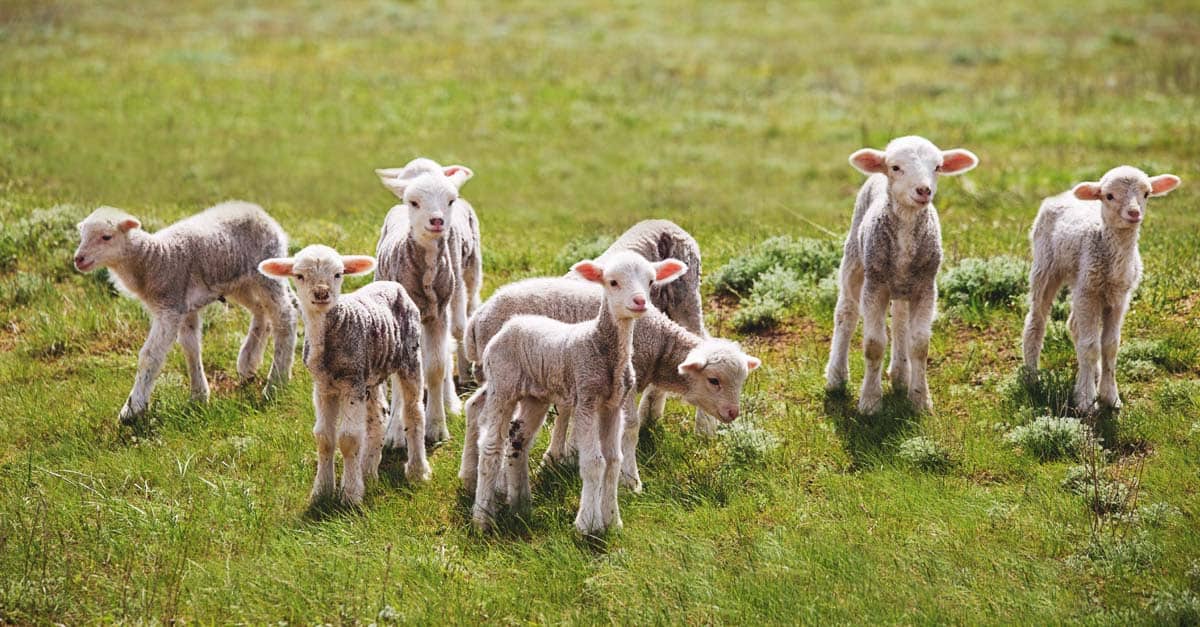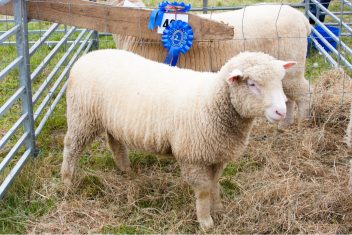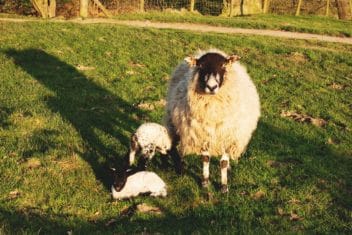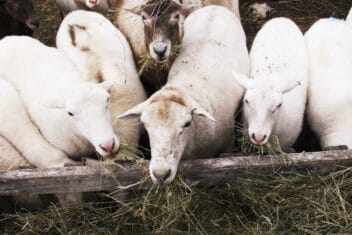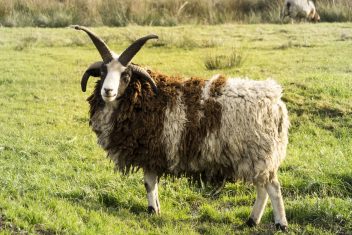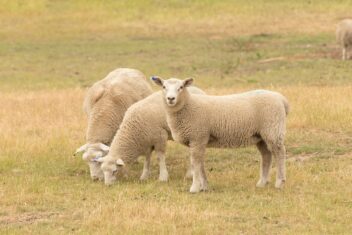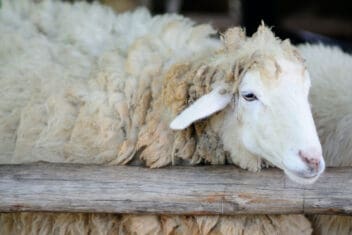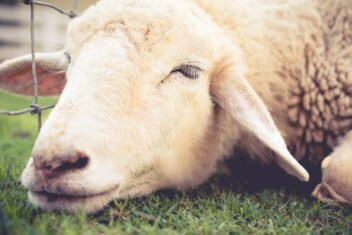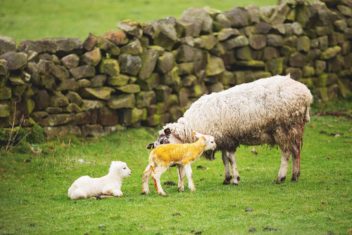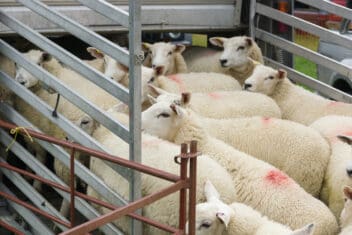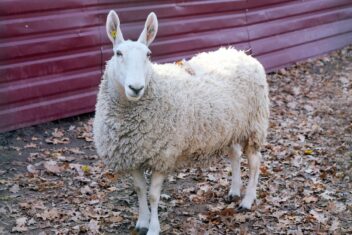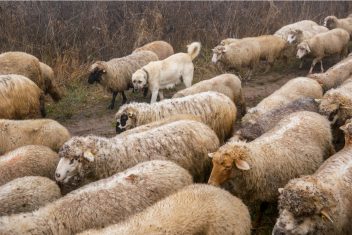When you first start raising sheep, whether it’s for milk, meat, or fiber production, there is a lot of information you need to absorb.
From what to feed sheep to whether you can keep them with goats to how to shear them, raising sheep is not without its challenges. There is no time that it is more stressful, however than when you are preparing for lambing.
Being prepared for this exciting time is one of the best things you can do to prevent problems. However, if you raise lambs for long enough, you will likely be faced with some kind of crisis eventually.
Here are some of the most common lambing problems – as well as how you can prevent and address them if they do happen to arise.
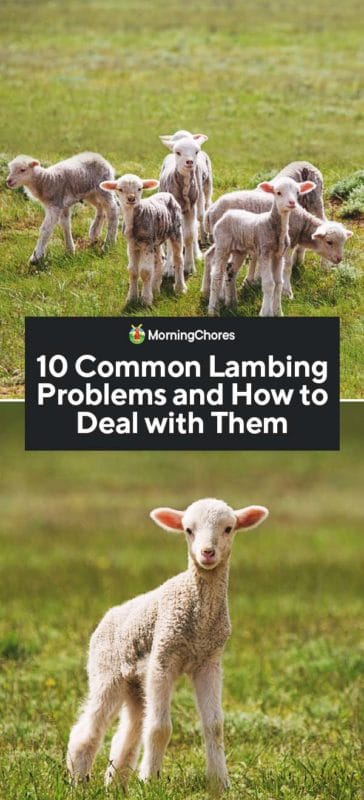
1. Hypothermia
One of the most common killers of newborn lambs, hypothermia is most common during winter or early spring lambing. If a lamb’s body temperature drops too low, it can easily go into shock and die.
Sheep are ruminants, as you likely already know – this means they produce body heat from digestion. Adult sheep can often survive sub-zero temperatures with minimal protection because of their intricate digestive processes as well as their thick coats.
Unfortunately, young lambs don’t yet have the well-developed digestive systems and dense wooly coats needed to keep hypothermia at bay. Newborn lambs have minimal amounts of fat, meaning they rely almost entirely on their mothers and on supplemental heat to keep them alive.
To prevent hypothermia, make sure your lambs feed within the first few hours of life. You can buy a bit of time with heat lamps, but that time will be limited. If your lamb refuses to suckle or a ewe is, for whatever reason, unable to feed, you can use supplemental, bottle-fed colostrum temporarily while you figure out a permanent solution.
Try to make sure lambing occurs in good weather. Don’t let your ram breed your ewes if lambing will occur during the winter months! If the weather turns poor unexpectedly, make sure your pregnant ewes are housed inside the barn to prevent outdoor lambing.
2. Problems With Nursing and Bonding
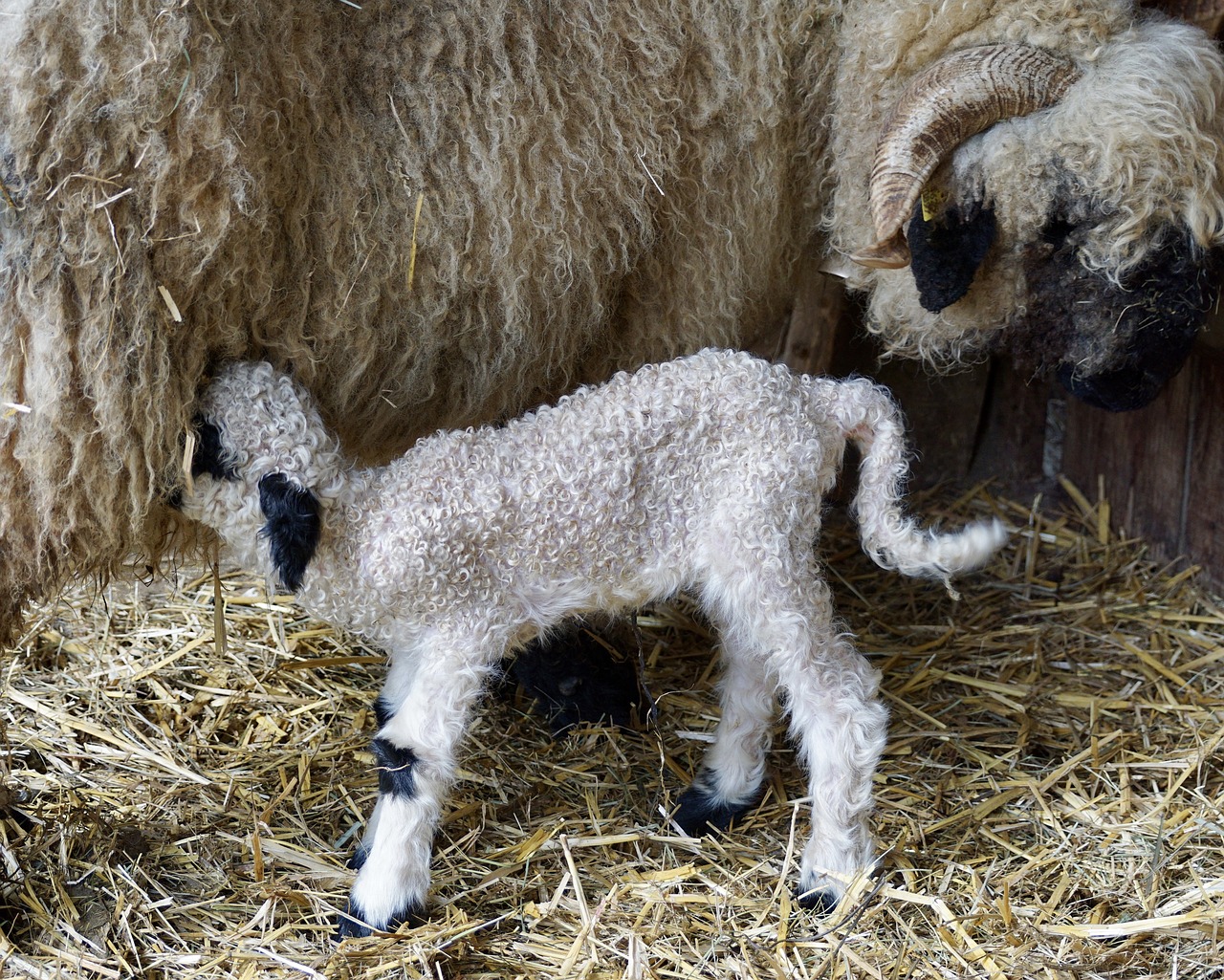
Sometimes, bonding issues can lead to postpartum difficulties. Often, an ewe is so tired or too traumatized to take care of her newborn. If that’s the case, you will need to intervene to get the lamb dry and suckling.
These issues are not common, but usually have to do with one of two factors . These have poor mothering genetics or something has caused her to reject her lamb. This is often the case when a mother does not get the chance to sniff and lick her baby immediately upon delivery.
You may be able to encourage natural mothering tendencies if the ewe is just exhausted. Dry the lamb off with a towel and bottle-feed colostrum. Let the ewe have a break, and try to convince her to allow the lamb to nurse after a bit of time has passed and she has rested.
If she still rejects the lamb, you have a choice to make. You might be able to convince another ewe who lost her own lamb to adopt the lamb. However, this process isn’t pleasant. It involves skinning the dead lamb and putting its skin on the lamb you want to be adopted.
Alternatively, you may be able to bottle feed the lamb, but this is a very time-consuming process.
Nine times out of ten, your ewes will nurse their own lambs just fine. However, a lamb that went through a tough delivery may be reluctant to nurse. Most of the time, your ewe will nudge and encourage your lamb to nurse until it finally latched on. If your ewe is also undergoing some kind of distress, though, you may need to hold the lamb to its mother or supplement with bottle-fed colostrum.
3. Malpresentation or Difficult Birth
Malpresentation is one of the most common lambing problems to arise, but luckily, it’s something that can be easily addressed by the shepherd.
Most birthing problems don’t have to do with the lamb being positioned inappropriately but with a disproportion in the size of the ewe to lamb. For example, if you use a large ram to breed a small-framed ewe, you may notice that your ewe has trouble lambing. Similarly, an overweight ewe can struggle to lamb even if the lamb is positioned normally.
Common malpresentation includes a breech presentation (in which only the tail is presented and both of the back legs are tucked beneath the lamb), a head-back presentation, and a head-only presentation with both forelimbs back. A lamb that is normally presenting will have its head and front limbs coming out first.
If you need to pull a lamb, it is important that you keep a few things in mind. First, if a lamb dies inside of a ewe, the lamb will swell and any lubricating fluid will be lost, making it more difficult to get the lamb out without tearing.
Second, a lamb has teeth and often horns that can tear the soft tissues of the vagina and uterus, meaning you need to be super careful not to yank the lamb around too much to avoid harm to your ewe. You might need to gently turn the lamb inside the womb if it is malpresented.
If you pull a lamb, make sure you apply pressure steadily and slowly. If you are assisting an ewe with the delivery of malpresented twins or multiples, know that delivering a backward-presented lamb first is paramount.
Making the decision to assist in a birth can be stressful – most of the time, ewes can deliver just fine on their own and assisting can result in more problems.
However, if your ewe is struggling to deliver and passed the water sac quite some time ago, you may need to intervene. Allowing the ewe to miscarry on its own is not a smart option, as it will decompose inside of her and cause serious sickness.
4. Rattle Belly
Also known as watery mouth, rattle belly is a disease caused by E.coli bacteria. This disease infects the small intestines and can result in death.
Luckily, this disease presents some pretty clear symptoms. If you notice these, you won’t have any doubt as to what the problem is and you should be able to treat it quickly.
Rattle belly presents symptoms such as extreme lethargy, disinterest in feeding, and excessive saliva production (hence the nickname watery mouth). In addition, the abdomen of the infected lamb will usually become quite swollen.
E.coli bacteria thrives in wet, dirty environments. This is one of the many reasons why it’s so important to keep your pens and barns clean at all times, but especially during lambing. E.coli can be transmitted from mother to lamb during feeding, particularly if the wool is soiled. Consider shearing your ewes prior to lambing.
If you begin to notice rattle belly symptoms in your sheep, you need to treat it immediately. There are several treatments you can use, depending on the stage, but it’s best to consult with a veterinarian. Potential treatments include soap and water enemas, laxatives, antibiotics, electrolyte therapy, and penicillin injections.
5. Dysentery
Luckily, dysentery isn’t as common as many of the other diseases I’ll tell you about. However, it is quite a bit more malicious. Dysentery often presents itself quietly, not showing symptoms until it’s often too late. Therefore, there aren’t any great treatments available for this disease.
It tends to be more common in lambs who are in their first week of life, causing sudden death. Vaccinating the mother is the best way to prevent dysentery, as she will pass on her immunity during feeding. You cannot administer dysentery vaccinations until a lamb is older. Working to ensure the mother is healthy is a smarter route.
6. Meningitis
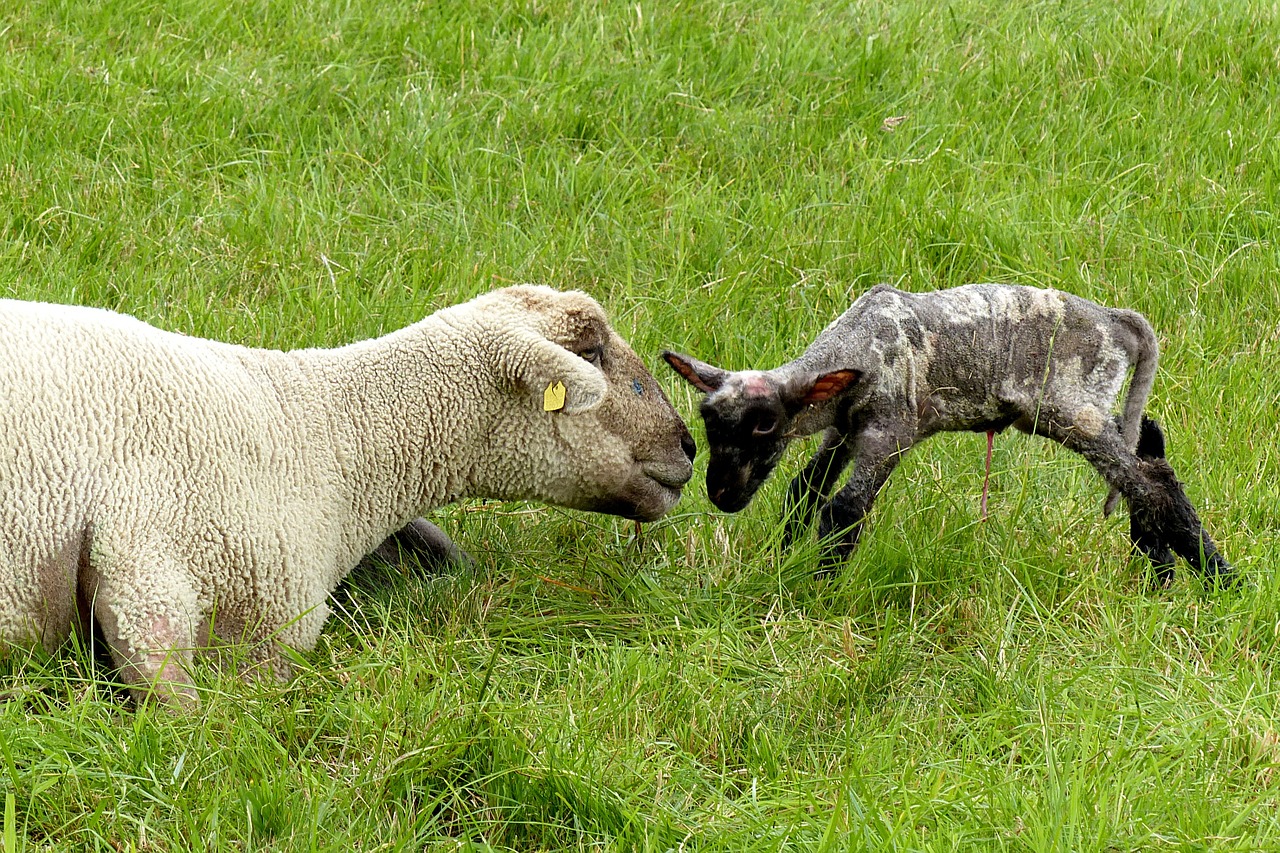
As meningitis is a serious concern in humans, so it is in sheep. This bacteria usually enter the lamb’s body by way of the lungs or stomach, quickly traveling to the brain and causing painful and often deadly inflammation. This disease is not easy to treat, so prevention is better than cure.
To prevent meningitis, dip the navels of the lambs shortly after birth in an iodine solution. Keep the living areas and lambing pens clean, and make sure the lamb takes in colostrum no more than one hour after birth.
7. Hepatic Necrobacillosis
Hepatic Necrobacillosis is an infection of the liver, often caused by a failure to clean the navel of the lamb upon birth. This disease starts to show symptoms during the second week of a lamb’s life. Affected individuals appearing thin, tired, and disinterested.
One of the clearest signs that you have a lamb infected with Hepatic Necrobacillosis is that she will not run away when you approach her. She may stand in a strange fashion, too, with her legs closed together and her back arched.
There aren’t many treatments for Hepatic Necrobacillosis besides euthanization. Therefore, it’s important that you clean the navel of your lambs immediately after birth with an iodine solution . Not only does this prevent hepatic necrobacillosis, but it prevents a whole host of other problems, too.
8. Twin Lamb Disease
Also known as pregnancy toxemia, twin lamb disease is one of the most common lambing problems you might encounter. The name is a bit of a misnomer, however. It’s not exclusive to mothers who drop twins but can also happen in single births.
Pregnancy toxemia occurs when a ewe has been unable to absorb enough energy from her food intake. It’s more common in twin mothers. The two lambs in the womb make it more difficult for a ewe to absorb nutrients.
This disease is unlike many of the others I’ve talked about in this list because it doesn’t just affect the lamb but the mother, too. A lamb who is suffering from twin lamb disease will be unable to provide colostrum to her newborn lambs. Her malnutrition can result in serious health problems of her own, too.
The best way to prevent twin lamb disease is to provide food at no more than four hours apart during the final months of pregnancy. This will help your ewe take in more nutrition during the time when it is becoming increasingly difficult to do so.
9. Septic Peritonitis
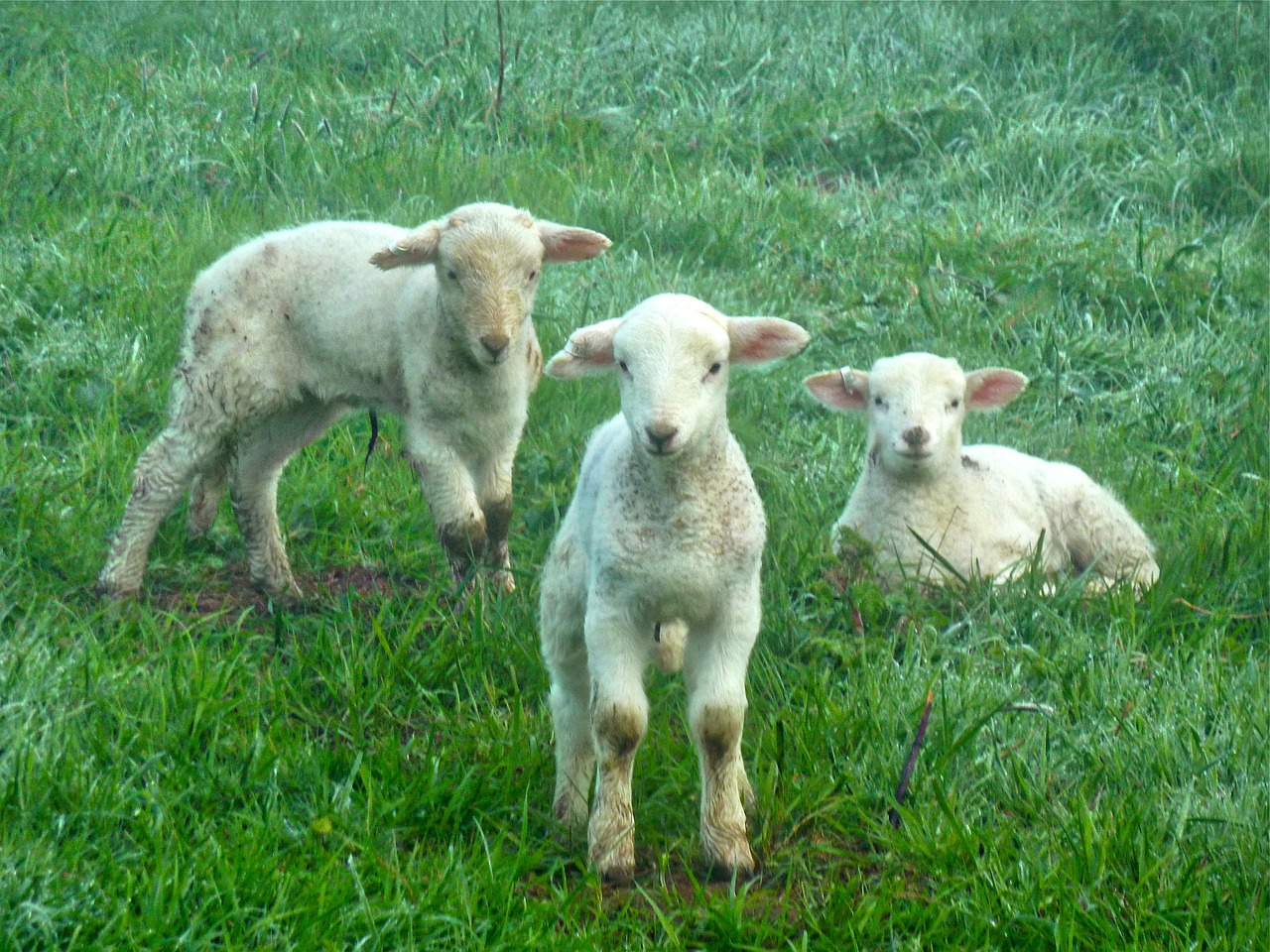
An infection of the abdomen, septic peritonitis usually appears within the first week or so of a lamb’s life. A failure to fully clean the navel of the lamb upon birth can also cause this disease. Make sure you dip the navel in iodine as soon as possible to prevent it.
There aren’t many treatments for these common lambing problems since it quickly results in dehydration and shows minimal symptoms. Affected lambs may refuse to eat or drink, and their backs may be arched, too.
10. Milk Fever
Milk fever, also known as mastitis, is a common problem in ewes who have given birth. It can manifest at any time immediately following birth up until a lamb is ready to be weaned. Bacteria inside the mammary gland is usually to blame. If you notice that your ewe has stopped eating, seems feverish, or is denying a lamb access to the udder, she may be milk sick.
Again, maintaining a clean lambing environment is paramount in preventing one of these common lambing problems
If your ewe does develop milk fever, you will need to take immediate action to cure the infection. Antibiotics can clear up an infection fast. However, a lamb can’t nurse while its mother has the medication in her system. You will need to bottle feed the lamb or wean it early (if it’s at least a month old).
Why Preparation is Key
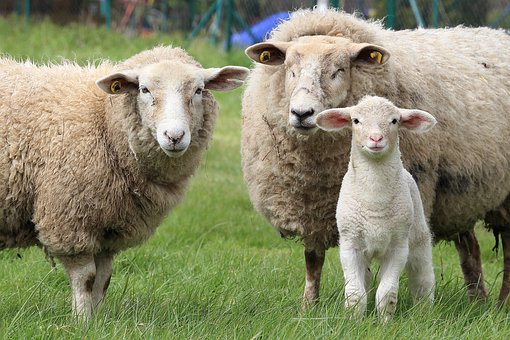
The best way to prevent any of these issues is to be vigilant at all times. While some diseases are far out of your control as a shepherd, keeping track of the health of your ewes can eliminate the likelihood of problems later on.
Be gentle and quiet when handling your ewes, especially during the process of lambing. Make sure everything is as clean as possible, and have a lambing kit on hand to help your ewes and newborn lambs as needed.
Being prepared is vital. It can make the difference between a healthy, thriving newborn lamb – and one that doesn’t make it through the first few weeks of life. The lambing process is nothing to be scared of, but instead respected. If you treat the process seriously and are careful about keeping your ewes as healthy as possible, you should not have any of these common lambing problems, and instead will be rewarded with a healthy, happy flock.
